 |
The California Cobra and The Commando (c1986(?) and c1988-1990)
Clean, Quick, Accurate; This was the phrase featured on the side of the box The California Cobra came packaged in. The saying never really caught on, not because of false advertising but because the California Cobra never fully materialized on the mid 1980 paintball market.
Today the California Cobra is remembered as one of the first paintball guns to feature a colored box and to collectors is seen as one of the most sought after classic paintball guns. Produed by Woodfield Distributors out of Yorba Linda California, about 30 minutes from SC Village and nearby many other fields in Southern California, very few Cobra’s have survived to present.
Here is a standard production California Cobra which was acquired from Sam Brinley who purchased it in 2008 at a firearms show in Idaho. The serial number on this gun is “1 100141.” It’s hard to believe 141 of these guns were ever produced since they were never advertised. It could have been that like Airgun Design’s Automag, serial numbers started at 100?
Guy Cooper, of Pro Star Labs Inc. owned this California Cobra in original packaging. |
Here is a California Cobra Guy Cooper of Pro Star Labs once owned which remained in it’s box and is possibly the only Cobra remaining in it’s original packaging. From the picture it looks like the manual could be numbered to go along with the Cobra.
According to Cooper, this is the same gun pictures in an APG issue with a small write up about the California Cobra. At one time Cooper owned nearly ten California Cobras, all in the standard black powdercoat finish.
Woodfield Distributors’ staff was comprised of three partners, Rich Breen, Gale Geoff and Sam McBride. “Sam ran Aerostar marketing in Chicago and Gale was Aerostar West,” wrote Steve Distad who ran Aerostar Wisconsin and also worked with Paintball Sams in Wisconsin.
Aerostar was one one Paintball’s largest wholesalers during the late 1980s. Geoff ran Aerostar West out of Southern California which marketed the Assassinator 1 and McBride ran Aerostar’s main wholesale distribution point out of Chicago, Illinois.
In 1985-1986 the second generation of stock class pistols (with pumps) and the first batch of modified direct feed sheridans would be hitting the market.
The pistols available in 1986 would include Nelson 007s with pump handles, the second generation of Splatmasters without the side cocking notch, early AGA 62 caliber 8 shot revolver pistols, early pgps, pursuit pistols and South Bay Arms/Tim McMurray were just making there debut with direct feed Marauders and Annihilators. Bud Orr was also beginning to make his first Sniper 1s around 1986 and both Orr and other Southern California Shops such as Gramps and Grizzly were pioneering the way with constant air.
Bushwackers’ team patch when they were sponsored by AeroStar West. Assault Line was Aerostar’s line of accessories. |
Woodfield Distributors was formed as a California Corporation on March 13th of 1987 (screen shot taken from California Secretary of State Business Search website.) And in late 1987 the entry of direct feeds and the realization that the paintball market would be moving away from stock class pistols and 12 grams probably led the cease of production.
Also in 1987, Darkside Inc had their early plastic Mark I/II pistols out, Puma Tech’s short and long barrel Pumas were making their debut as well as Brass Eagles (then War Games) released their first version Nightmare. Also in March of 1987 Tippmann released the SMG 60 and Line Si began producing the direct feed nelson breech drop nelsons, “the Skirmish.” Around this time South Bay Arms (Carter Machine) also began producing his signature direct feed Comp.
Aerostar West’s Assassinator 1 |
The Assassinator features a steel body with a removable barrel and take drop in nelspot internals |
The Assassinator is engraved into the right side of the steel body. |
Aerostar West’s ad for the Assassinator 1 in the March 1988 issue of APG. |
The Command Post’s ad on the rear cover of the March 1988 issue of APG |
In 1988 tons of direct feed and constant air Nelson valved pumps began hitting the market including the Assasinator. In spring of 1988 the Assassinator 1 was released which was Aerostar’s own direct feed constant air Nelson based bore drop pump.
The Assassinator must have been produced after the California Cobras since two of the partners in Woodfield Distributors, McBride and Geoff were associated with Aerostar and it is unlikely they would produce a stock class 12 gram pistol and the Assassinator at the same time. The Assassinator premiered in an advertisement by Aerostar West in the March 1988 issue of APG.
On the rear cover of the same APG issue the California Cobra also made an appearance in an ad for the northern Florida mail order supplier, the Command Post. The Commando Post often showed a variety of guns that you couldn’t actualy buy in their ads, including BE Eagles, reversible feed snipers and also the PS-15 Maurader so it’s doubtful Commando Post was selling Cobras but had just obtained one for testing or for their collection.
Based on Aerostars involvement it’s likely that the California Cobra’s demise resulted from the markets move to direct feeds in the second half of 1987 and McBride and Geoff deciding to go in a different direction than Rich Breen was taking the California Cobras.
And in late 1988 Bud Orr began selling his first model Commando which was featured in the December 1988 issue of APG both on the cover and in a breakdown in a two page spread shown below.
APG’s article on the California Cobra shown in the December 1988 issue, page 1. |
APG’s article on the California Cobra shown in the December 1988 issue, page 2. |
After Woodfield Distributors dissolved, Rich Breen ended up with a lot of trigger frames left over and possibly some pump handles. As Guy wrote me, “There was a big tie in between the two [Bud and Rich].”
The California Cobra’s unique features included wood grips, anodizing covered with a powdercoat, proprietary (nelson based) bolt and hammer which are the same diameter as the barrel bore, an integrated valve body 12 gram changer, a reversible stock feed and rolling bearings in the sides of the pump handle. Most guns were also serialized which was also a unique feature for guns of that period. Only PMI’s models of brass, Bud Orrs Snipers, and Tippmann’s SMG featured serials in that period.
Powdercoated Logo on the left side of the California Cobra. Reads, California Cobra, Woodfield Distributors, Yorba Linda, CA. |
Break down of the California Cobra. |
Integrated Valve Body, side view |
Integrated Valve Body, back view |
Integrated Valve Body, front view |
Integrated Valve Body with internals |
Frame without bolt, hammer and valve dropped in. |
Frame with bolt, hammer and valve dropped in. |
Back view of frame with bolt, hammer and valve dropped in. |
Front view of frame with bolt, hammer and valve dropped in. |
Side view of frame with bolt, hammer and valve dropped in. |
Front View of Cobra Barrel |
Cobra body with Frame and Breech removed. |
Back Left side body view |
Another back left side body view |
Back right side body view |
Another back right side body view |
Front right side barrel with sight pin |
Another front right side view showing pump bb holes |
(left side)California Cobra Bolt
|
But according to Bud Orr, production was halted from a disagreement between the staff which resulted in the California Cobra never being sold publicly and as Guy Cooper wrote, “I don’t know if it was ever advertised,”
California Cobra in EMR
|
|
Here are two pictures of the side of the stamping from the California Cobra in the collection at EMR:
This Cobra is stamped with the serial of “1 100134” and was traded to Michael “BLUE” Hanse, owner of EMR paintball park by Thad “Weltman” Drum for a Bullpup VM.
Below is another California Cobra which was purchased from the collection of Gramps and Grizzly in Southern California.
Gramps Grubb from “Gramps and Grizzly” told me he didn’t know Rich Breen and when this gun was traded to him he was told it was the prototype for WGP’s Commando. This could hold some truth, as Guy Cooper commented, “Yes, [this] cobra could have been the early model. Cant really know with Rich gone.”
Gray California Cobra purchased from Gramps and Grizzly in 2008 |
This California Cobra is missing many prodution features which could make it an early model or a post production model. |
External differences between this gun and production models are the lack of sights, no serial or brand/manufacturer stamping, no safety, different angles on the trigger and trigger frame and no powder coating. In all likely hood this California Cobra is either a prototype, one of the first batch produced or a very late production model put together from parts that never were entirely finished.
Gray California Cobra next to Production California Cobra |
The first few models of Commandos used leftover frames from the California Cobra which Breen sold to Orr.
Cooper forwarded me this message from Bud Orr responding to questions about Breen and his involvement in production of the Commando:
“Rich had a lot of of trigger frames [1500] left over and wanted to get rid of them and in the mean time Al Iba from I & I sports wanted a custom marker. So with Rich’s frames I built the Commando.”
Breen was also contracted for a few other WGP products as well. “Rich was contracted to machine barrels for Budd,” wrote Shane Kinzel, who met Rich Breen later on when he ran Mile High Paintball in Colorado. “The ribbed Sniper [1] barrels were done by Rich’s shop in California,” Kinzel continued.
Some of Bud Orr’s earliest nelson pumps were a batch of nelson pumps created for Survival New York (SNY) as rentals. These were built before the initial run of Commandos for Al Iba and didn’t use any Cobra parts. According to Bud these bodies didn’t have a name. These Chrome/Nickel Steel direct feed bodies kits replaced stock class feed nelson 007 bodies.
December 1988 ad for Commandos from WGP and NJ TopGun Paintball |
WGP also supposedly put together a small batch of these bodies together with California Cobra grip frames and California Cobra pumps handles for the Master Blasters which were the home team for SNY. These nelson based pumps were named “Pro 45s” and had a production run of around 12-15.
It would make sense that these guns were produced right around the time when Rich Breen sold his inventory to Bud Orr and after the small amount of available pump handle were quickly used up as WGP geared up to begin the production model of Commandos for Al Iba.
Around the same issue as the first model of the Commando premiered (December 1988) this advertisement for the first model of Commando also appeared in APG promoting the first model of Commando as available from WGP and from Top Gun in New Jersey.
Here is a first generation Commandos (in left feed).
This first generation commando pictured in the article from APG looks like the same gun but the drop out changer in the add doesn’t have the knurling. The Commando pictured has a more rounded trigger frame than all the other examples of this version.
First model WGP Commando, notable features are tall rail, metal pump and cobra frame |
Release date for this model WGP Commando would likely be the second half to late 1988 |
This gun was purchased from Peter Salgado who picked it up in pieces from the WGP factory when they were either moving or being sold to JT. Peter said that “One of Bud’s employees” took him through the factory and sold him a car load of WGP parts.
Other features of this versions of Commando include, a tall rail (in between the grip frame and body which was possibly also a California Cobra part), standard breech drop nelson style bolt that has been dual tapped, the metal pump handle, the California Cobra grip, steel body and sniper 1 style plastic knob holding the body to the grip.
The next model commando released from WGP has the tall rail, the sniper 1 style pump handle (instead of the black anodized aluminum handle), the California Cobra frame, steel body, WGP bolt which looks similar to later ranger bolts but non adjustable and the same wrinkle powder coating style finish as a California Cobra.
Original with back 12 gram changer and site rail (back portion of 12 gram changer not powder coated):
Second model WGP Commando, notable features are tall rail, sniper 1 pump and powder coating and cobra frame |
This model of Commando has identical wrinkle powdercoating to the California Cobra. Release date is likely late 1988. |
And another commando the same finish and a back-bottle adapter (missing sight rail):
Another example of a second generation commando |
Shown with a back bottle adaptor and missing sight rail. |
Here is a close up texture shot of the California Cobra logo and which shows the powder coat clearly:
Powdercoated Logo on the left side of the California Cobra. Reads, California Cobra, Woodfield Distributors, Yorba Linda, CA. |
Powdercoated second version WGP commando detail (trigger is missing). |
And here is a third generation commando which is the first model of commando to feature a thin rail between the grip frame and body, California Cobra frame, brass body instead of steel, and WGP bolt, sniper 1 style screw knob.
In an ad for Al Iba’s I&I Sports:
I&I Sport’s ad from 1989 for the third generation Commando. |
Here are profiles shots of a third version Commando which was another parts gun rescued from WGP:
Third model WGP Commando, notable features are thin rail, sniper 1 pump, a brass body and cobra frame |
This is one of the two more common models of the Commando |
After the third model of the Commando, WGP had most likely used up there left over stock of California Cobra parts and began using one frame for both their fourth model Commandos and late model Sniper 1 (post 1000) serial numbers.
Here is a later model Sniper 1 (serial numbers close and over 1000) which use the same frame as the fourth model Commando.
Late Model Sniper 1 |
Uses transitional WGP aluminum frame |
Late Model Sniper 1 |
Uses transitional WGP aluminum frame |
This transitional style aluminum WGP frame resembles both the stock cast sheridan frame which inspired it and the later cast WGP Sniper 2 and Ranger swing frame which a much higher quantity were produced.
Here are pictures of a fourth version Commando.
4th generation WGP Commando |
Uses transitional WGP aluminum frame and is the most common version |
This is probably the most well know version of WGP’s Commando but is often confused as a Ranger.
Changes from the third version are as follows:
California Cobra style frame to late transitional sniper 1 frame.
Body on the third version is brass, 4th version is stainless similar to the earlier versions.
As on the third versions, the Bolt and hammer are stainless with the anti kink center and non adjustable.
The rail is similar to the third version but the frame spacing is slightly longer. And the plastic thumb screw has been replaced.
The pump handle has the same milling but the circular milling isn’t as pronounced.
The differences between the 4th version commando and standard production rangers are as follows. As with Transitional Sniper 2s(early sniper 2s) many early rangers have a mismatch of both parts.
Here is an early transitional Ranger which uses a Commando (Sniper 1) style pump and Commando (Sniper 1) style sight rail. It also uses a longer powertube as found on commando and the asa doesn’t put the tank at an angle.
Early transitional WGP ranger, serial 188 |
Uses standard Sniper 2/Ranger frame but uses Commando/Sniper 1 style sight rail and pump |
Serial is lightly engraved |
Sight rail is Commando/Sniper 1 style |
Asa make tank come straight out, horizontal with gun |
Milling on 4th version commandos pump handles are the same as sniper 1s while production Rangers feature sniper 2 style milling on the pump handle.
Below is a production ranger:
Production Ranger serial 7012 |
Uses Ranger sight rail, Ranger (Sniper 2) pump handle and asa is angled downward |
Sight rail is raised |
The frames on 4th version commandos are late model sniper 1 frame instead of production sniper 2 cast frames.
The front rail screw on the fourth model commando is a small steel thumbscrew rather than the Ranger’s long knurled steel thumb screws which were also used on early WGP Sniper 2 and Autococker cocking rods.
Most 4th model commandos came with WGP 12 gram changers which came on most model of commando. Rangers (with the exception of site ranger rental guns) came with Asas.
The bodies on Commandos are shorter and take standard nelson 007 spec asa/12 gram quickchangers while Ranger bodies are longer and take specific asas which have a longer smaller outer diameter front to go into the body and a shorter larger od back end asa.
Fourth version Commandos used standard spec stainless nelson powertubes with 8-32 threads on standard cup seals and brass valve retaining screw. Standard production Rangers use shorter powertubes in either stainless steel or parkarized steel and are beefy 10-32 threads with hybrid cups seals which has the seals built into valve retaining screw rather than the cup seal. The cup seal is just a steel but which seals against the valve retaining screw.
Commandos use a standard commando short low sight rail (which is the same as sniper 1s) while production Rangers used a large sight rail.
Sight Ranger purchased from Trade my Gun who purchased it from Sonny Lopez who picked them up from the WGP factory. |
Site Rangers featured OD green rails, 12 gram dropouts and barrels. Many were never assembled. |
Commando S.E. ad from Paintball Sports Magazine Dec. 1989 |
A rental version of the Ranger was also produced by WGP, named the “Site Ranger” which used the dropout 12 gram changers from the commando but were retooled to fit the longer body of the Ranger. Site rangers also featured an od green rail, dropout changer, and barrel. These were produced in much fewer numbers with highest serials getting close to 400. Many Site Rangers were never assembled though and when the WGP factory was disassembed in the later 2000s many Site Ranger rails remained. Site Rangers also used non adjustable bolts making them a tought and easy to maintain rental gun.
After working for Bud on the Commando and other WGP projects Rich Breen left California. “With the profit from the frames Rich moved to Denver Co,” wrote Bud Orr.
After moving back to Colorado Rich Breen opened Mile High Paintball out of Littleton. At Mile High Paintball Breen began production of his next gun, the Commando SE. The gun was released around the time that the fifth model of Commandos or early Rangers were coming out.
New products listing for Commando S.E. from the january 1990 issue of Paintball Sport Magazine. |
This gun resembled a mix between first model Commandos and the Pro Star Labs’ Kodiak which is inspired. Rich Breen build the Commando S.E.s and Guy Cooper distributed the Commando S.E. before releasing the Kodiak and Warrior. The Commando S.E. made a brief appearance in the December 1989 and January 1990 issues of Paintball Sports Magazine.
The commando SE looks very similar to the first model of commando with a few exceptions. The site rail is shorter, the wood grips have more pronounced angles, the rail is short (similar to the third and fourth models of Commandos) instead of high (as the first and second versions used).
The finish on the Commando SE wasn’t as nice as WGP models and the welds on the feed also weren’t as even. The back bottle asa used on the Commando SE was the same featured on Pro star Labs Kodiak.
Commando S.E. Produced by Rich Breen and Mile High Paintball |
The Commando S.E. used the pump handle from the first version Commando, the frame rail from the 2nd or 3rd version and the Cobra frame. |
This particular Commando S.E. is missing several parts such as the front frame screw and the sight rail. |
The vertical body screw which would normally drop through the rail has broken off on this Commando |
The frame has unique angles and the grip is annodized instead of painted. |
The pump handle on the Commando S.E. is the same as on first version WGP Commandos |
The poor weld quality is apparent on the feedneck |
When the Commando SE didn’t sell very well Rich sold the design to Guy Cooper’s company, Pro Star Labs. Guy Cooper wrote about the Commando S.E. and Kodiak, “I bought out the Commando SE project and made 140 changes to the gun and called it the Kodiak.”
Kodiak produced by Pro Star Labs Inc. |
Used a Cobra style frame and Kodiak is engraved on frame rail |
Cooper continues, “Both the name and the gun were made by Pro Star Sports, Inc., my company. Eventually, I sold everything back to Rich and he put out some sub standard Kodiaks with hodge podge of parts. All Kodiaks and Warriors by Pro Star were made at AG Machine, Englewood, CO.”
Rich Breen passed around 1995 and information on Woodfield Distributors’ California Cobra and WGP’s Commando has faded along side him.
I have seen fewer pictures of Califronia Cobra’s surface on the Internet then I have fingers on two hands and would imagine less than 100 were ever totally assembled with the majority of them going to Guy Cooper after Rich Breen had moved back to Colorado. And although they were never advertisted or marketed they did manage to make it all across the country and it would make sense that early in production they were distributed locally.
Steve Distad wrote me, “There may be some [California Cobra’s] floating around out here [Wisconson],” and he went on to say, “Greg Kludt, the originator of Paintball Sams WI, brought some back from California, he was dealing through Paintball Sams in northern California on those, I believe.”
Gibert Martinez, Captain of the California Bushmasters remembers a “bandit field” in Southern Calfornia which used California Cobras, he wrote, “This had to be in the mid-80’s before I owned my own equipment.”
Renick Miller of Shocktech/Bad Boy Toys in Chicago, Illiois owns this California Cobra which was displayed at the World Cup in 2007. It was later stolen from Bad Boys Toys in 2010 only to reappear at a storage unit auction in Indiana. Luckily Miller was able to get it returned to him along with 6 other stolen guns. The 40 plus other stolen guns have so far not been found (as of early 2011 when I was last updated from Renick).
California Cobra and other classics displayed at 2007 World Cup. Photo saved by Paul Searl but original photographer unknown. Please email me for credit (dan@baccipaintball.com) |
Stolen California Cobra pops up at a storage unit auction in northwest Indiana. |
Big thanks to Guy Cooper, Bud Orr, Shane Kinzel, Gilbert Martinez and Steve Distad for the information needed to put this article together. Another thanks to Gramps Grubb and Mike “Grizzly” Grubb, Sam Brinly, Peter Salgado, Alvin Ray and Kevin (Freedom) for the guns needed to take the required pictures.
Paintball magazine articles, photos, and advertistment from APG and Paintball Sports Magazine are property of their respected owners.
Written material and photographs copyright Daniel Bacci (boxed California Cobra courtesty and copyright of Guy Cooper) www.baccipaintball.com Bacci Paintball LLLC 2012. For permission to repost please ask.

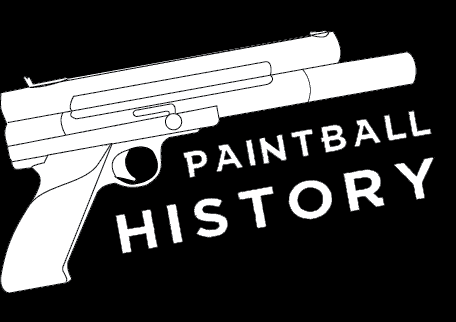
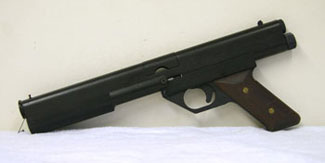
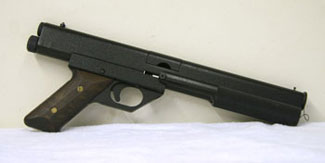
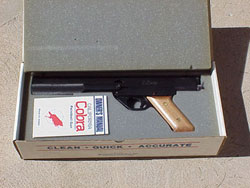
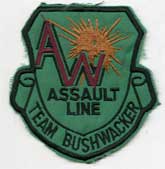
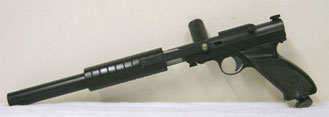

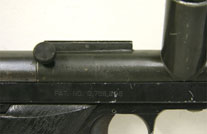
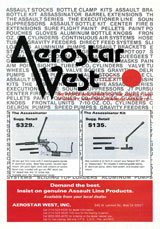
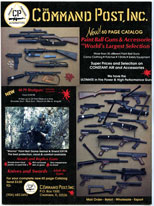
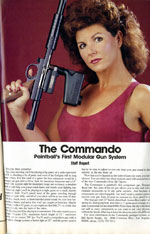
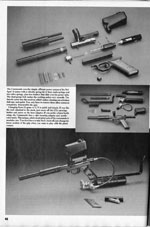

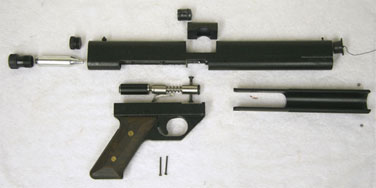


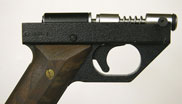







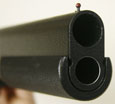


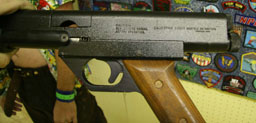
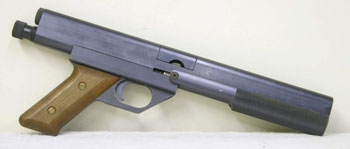
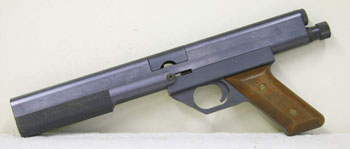
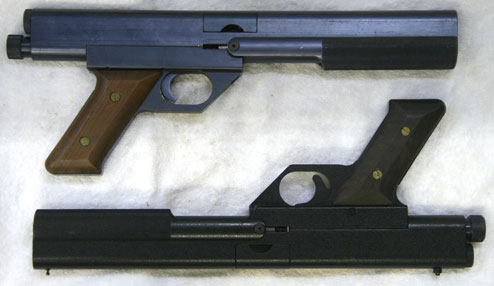


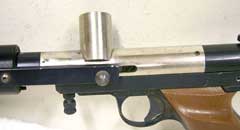
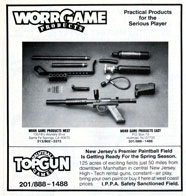


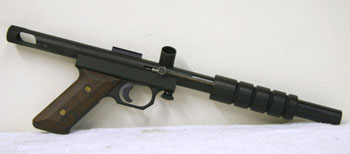
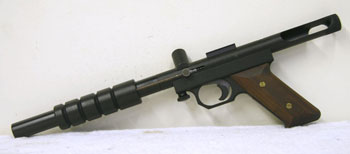
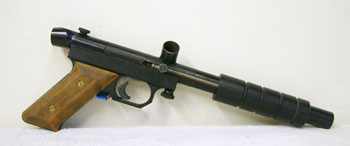
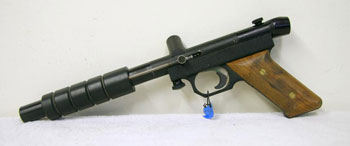
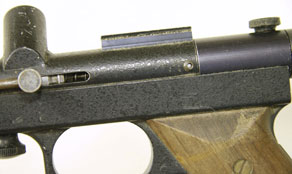
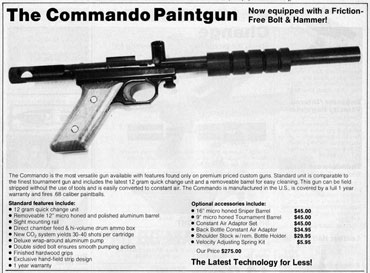
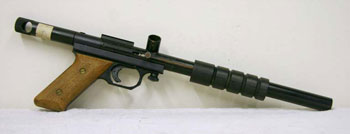
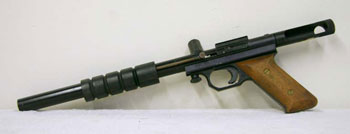


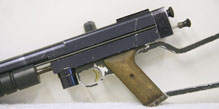
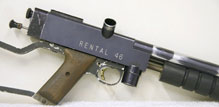
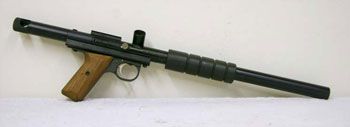
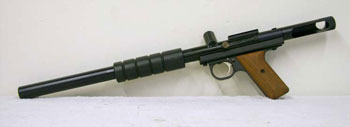
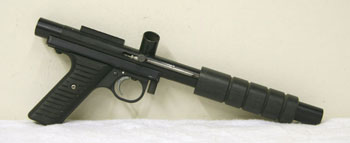
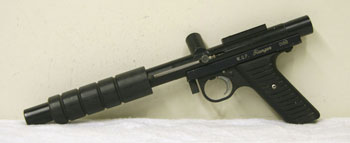
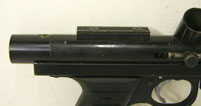
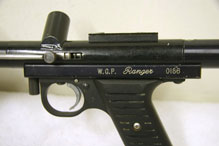
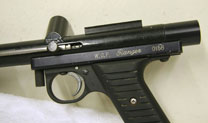
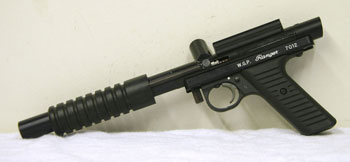
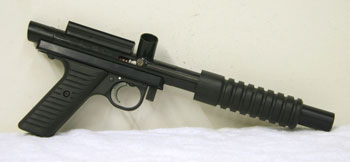
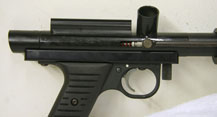
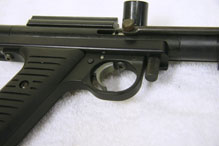
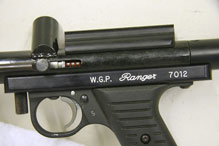
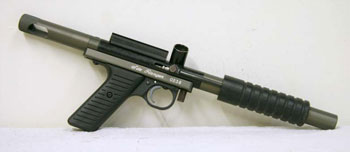
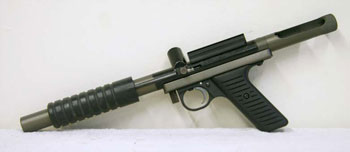
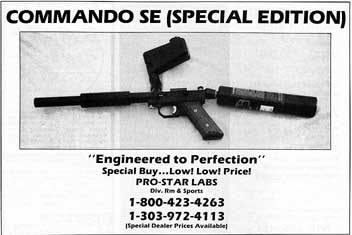
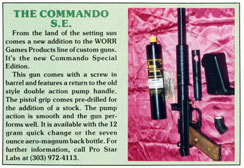
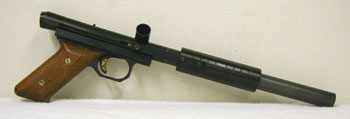
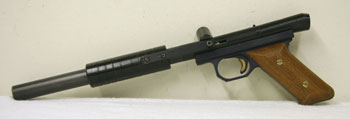
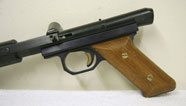


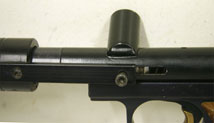
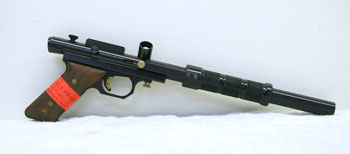
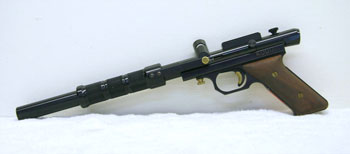
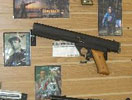







its amazing that within a period of 30 years paintball is were its at now. Live long and paintball. Also how much would an average wgp sniper 1 pump be worth ?
[…] Find a more complete history of the California Cobra here. […]